Leave No Trace: Managing Human Waste in the Outdoors
This is a story about poop. It’s about the principles of Leave No Trace camping not changing exactly, but evolving in the way we need to apply them. Because we are loving our wild places to death by treating them like giant toilets.
The focus here will be on ‘frontcountry’ areas which I will define as relatively remote yet road-accessible areas with little or no services, typically managed by the National Forest Service (NFS) or Bureau of Land Management (BLM). These playgrounds are among the crowning jewels of the mountain west and some of the finest rewards for anyone seeking the freedom of the Great American Road Trip. There’s little more satisfying to a vagabond van-lifer than seeing a brown wooden sign that reads “Entering [insert name] National Forest”, knowing that an ideal campsite is just a flat spot away.
There are many thousands of miles of these roads coursing through some of the most beautiful places in the U.S.—some close to towns, others a hundred miles from the nearest anything. People exist who don’t always treat these places the way they should, but there are many of us that do our best. Unfortunately, ‘many of us’ is truer than ever before as a massive uptick of recreators flock to these vehicle-accessible areas. It’s that idea of ‘our best’, though, that is shifting right before our eyes and the new norm might surprise a lot of us.
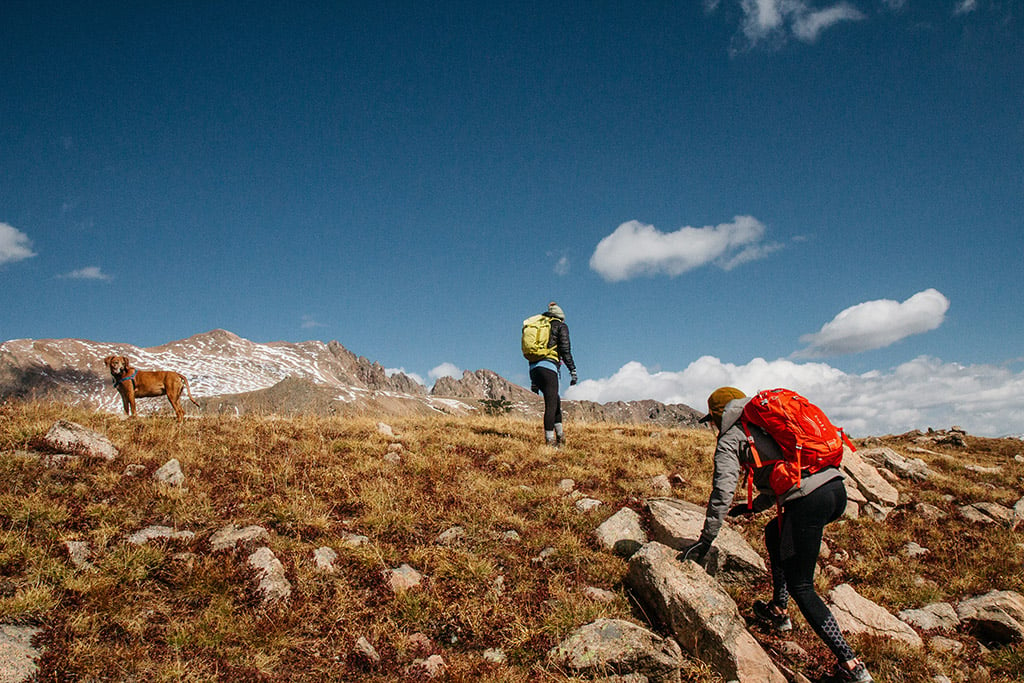
A Case of More Waste
Tucked deep into a canyon outside the quirky, faux-Bavarian mountain hamlet of Leavenworth, Washington lies a treasure trove of adventure. A rough Forest Service road leads out of town and into a canyon with the surreal beauty of the Alpine Lakes Wilderness towering above. Below that, the narrow valley is filled with the raging, glacier-fed torrent of Icicle Creek, endless granite boulders, crags and walls with hundreds of climbing routes, and a multitude of other reasons to come hang out here for a while.
A few decades ago, people would come and choose a campground, or ‘guerilla’ camp for free down a few dead-end dirt roads and other limited, yet acceptable nooks spread around the canyon. Later, it became more of a challenge to find a spot in a campground, forcing more people into the limited frontcountry areas. Sprinter vans and Subarus from a rapidly growing Seattle metropolitan area began filling the pullouts along the road and the once-secret spots got trampled and grew in size, while new ones were spawned in ever less-optimal areas. Fast forward to today and, on any given weekend, you’ll find Forest Rangers turning people away from overflowing trailheads, campgrounds that filled the day they opened for reservations six months prior, and nearly every flat piece of land turned into a makeshift campsite. Those areas are largely devoid of vegetation, littered with garbage, toilet paper and, you guessed it, feces. It’s also worth noting that because of the topography, most of this impact is creekside, and that creek is a large component of Leavenworth’s water supply, creating a totally unsustainable situation.
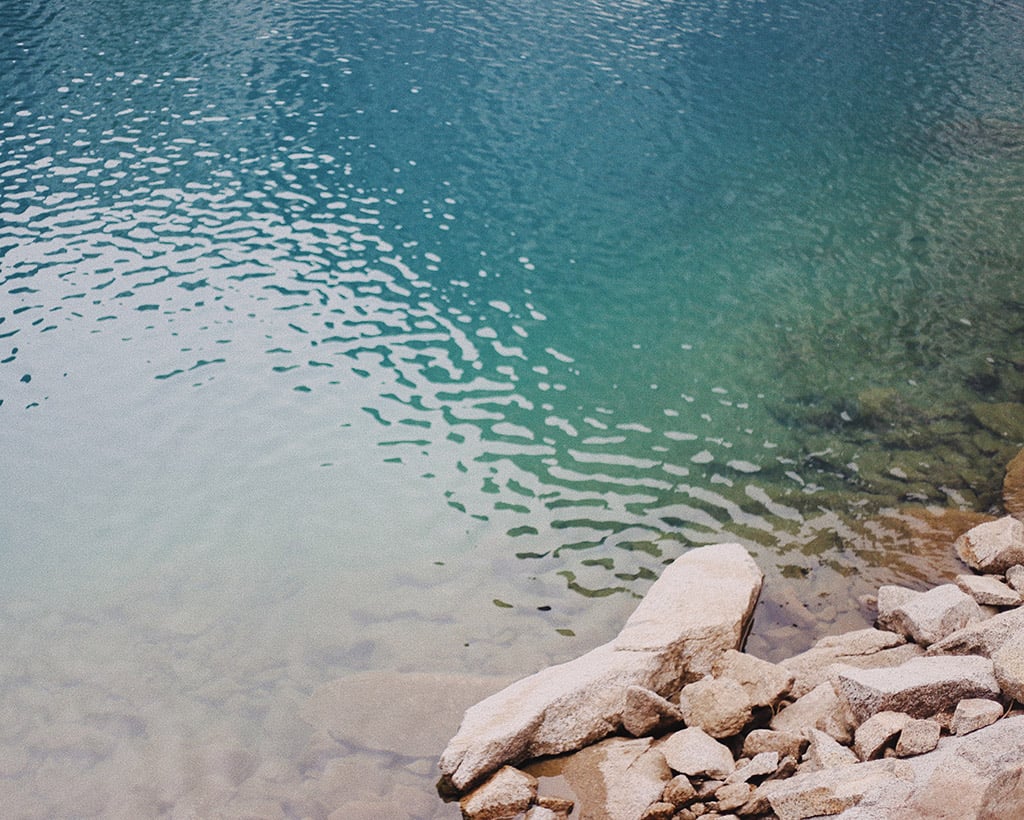
The Scope
Leavenworth stands as but a single example of what is happening to outdoor playgrounds all across the U.S., including back- and frontcountry areas spanning from Moab to the Sierras and Estes Park to New Hampshire’s Mount Washington. Urban expansion continues to gobble up more land (a 15% increase between 2000 and 2010), while an antithetical desire to escape with remote employment opportunities swells mountain town populations across the west. Actual data is challenging to find, but one telling indicator may be the 380% increase in PCT thru-hiker permits issued from 2013-2019. That humbling number, combined with an endless stream of reports of epically crowded trails and parks across the nation, paints a pretty clear picture of the growing traffic in, and pressure on, our outdoor spaces.
Logically, more use means more impact, and one of the most critical issues that needs to be addressed is irresponsible human waste disposal. The ‘shallow burials’ and wads of toilet paper that begin to build, along with the physical impacts of social trails and dug-up areas often also result in water contamination, major sanitation issues, further restrictions and unpopular user fees that become necessary to mitigate the impact. However, they are also what drive new policies and education efforts.
In Leavenworth, a group of concerned locals got together to create the Leavenworth Mountain Association (LMA), to help address the growing impacts they were seeing. Josh Glantz, Vice President and Fundraising Chairperson of the LMA explains, “A lot of it is generated by people that are new to the outdoors and just don’t know any better.”
To counter that, the LMA is pushing a simple three-option solution. The first and third choices you’ve heard before, but it’s the (slightly ironic) choice ‘Number Two’ that is turning a once-fringe practice into the new norm for places that are getting loved to death.
Frontcountry Waste Management – Three Easy Options
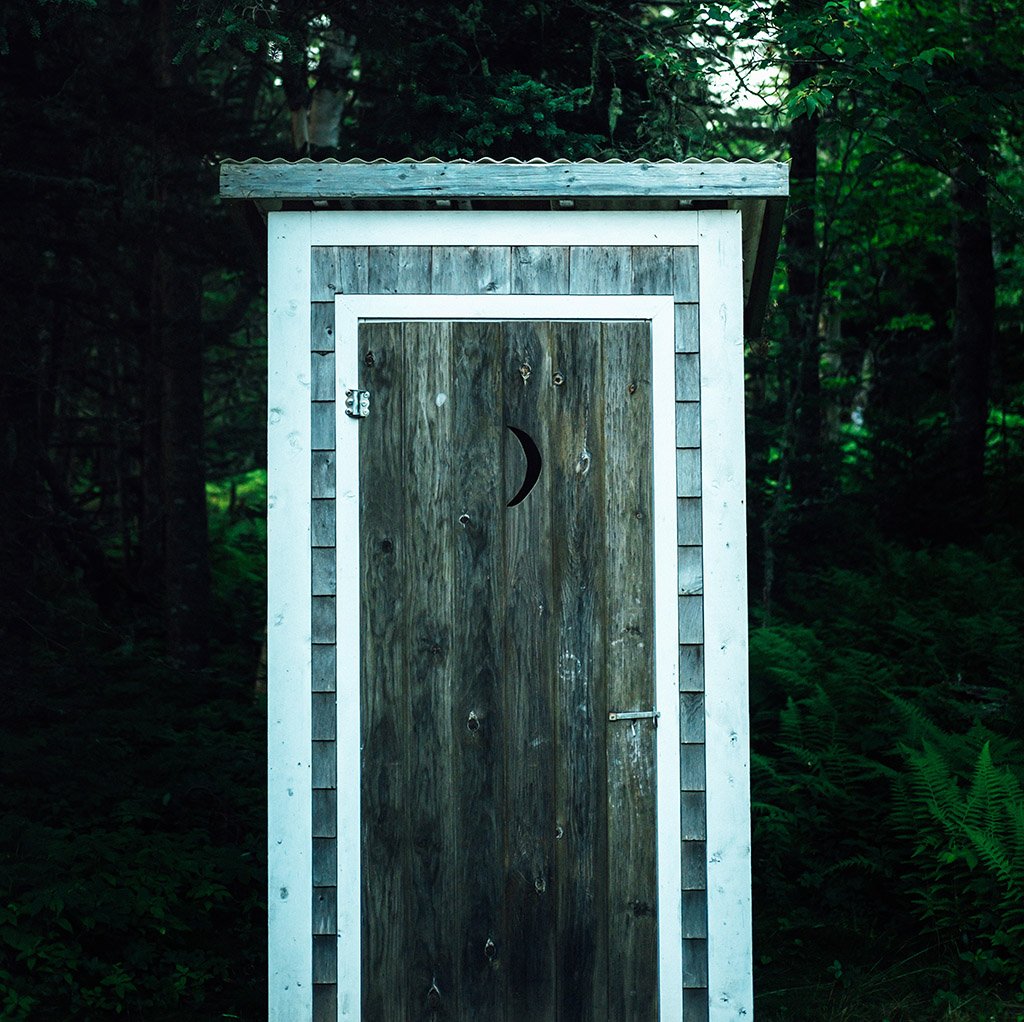
1. Use a Toilet
This is the most logical, but not-always-possible, solution depending on where you are. However, it’s also the best alternative if you have the opportunity.
“Most of us are pretty predictable creatures, so try to be near a toilet when possible”, says Glantz. “The canyon has National Park-scale visitation and a tiny fraction of the infrastructure and resources via the National Forest Service, so we fund port-a-potties up and down the canyon, making it easier and more convenient to get to a toilet should the need arise.”
Most major trailheads across the country have a vault toilet. If not, think about making that quick drive back to town to get gas or stock up on food. Drink that extra cup of coffee, wait a bit at camp before heading out for the day—just take your time until it’s ‘the time’. And if you can’t…
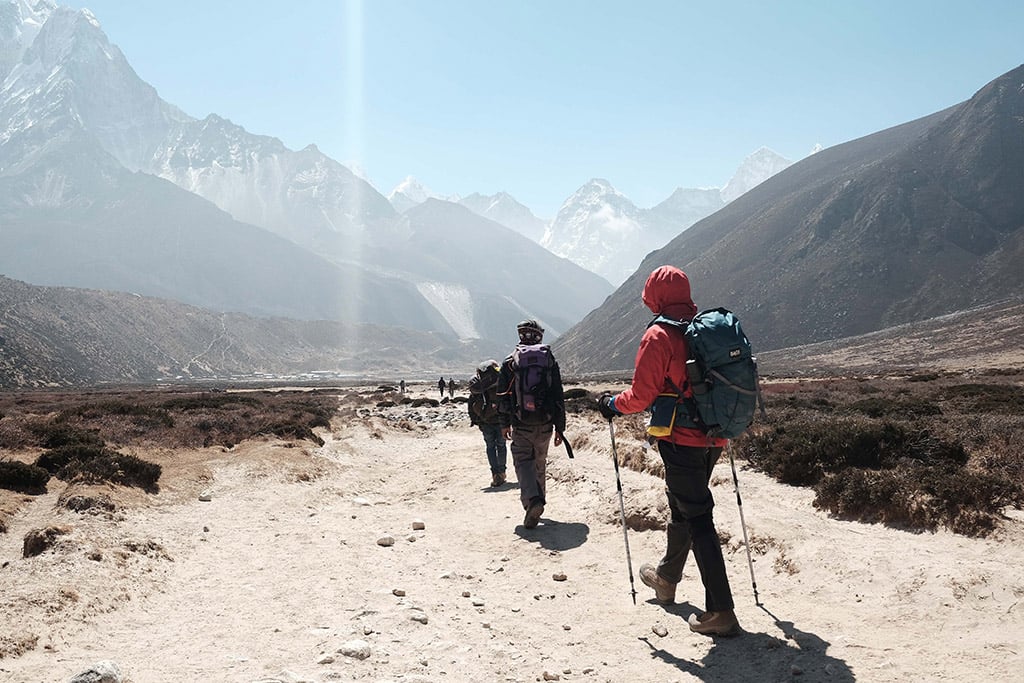
2. Pack it Out
Yes—that’s right. Welcome to the concept of radical acceptance. Pooping in a (specially-designed) bag and packing it out with you is already required in some areas, but let’s face it—it’s just not something that most of us do without it being mandatory. It’s stinky, inconvenient and adds weight to your pack. And yet, though it is all of those things, it’s not nearly as bad as stepping in it, finding wads of soiled toilet paper at the edge of camp, having your dog dig it up, contaminating water supplies or otherwise destroying the places we came to enjoy. Further, burying your poop in certain places (like the desert or on alpine tundra) is incredibly damaging to the ecosystem; it can take nearly a decade for excrement to be reabsorbed by nature, leaving a lasting impact on many levels. For some perspective, consider that millions of us do this every day for our dogs for the same reasons. Doing it for yourself might seem radically different, but it’s not.
Fortunately, the stink and inconvenience of the original and rudimentary ‘blue bag’ systems are things of the past and the weight of carrying a couple (ALWAYS have two in your pack) is negligible. While the basic elements remain the same–a lightweight bag for your ‘deposit’ and a tough outer bag to seal it in for transport–most commercially available options today are vastly improved. They include a gelling agent that begins to decompose the contents and greatly reduces odors, in addition to wide-topped inner bags that make hitting the target much easier. In fact, Biffy Bags have a custom-cut bag you can tie around your waist like a diaper that not only makes missing impossible, but it provides a modicum of privacy on glacier routes and other similarly inconvenient places. Most kit’s inner bags are also connected to the outer bag for easier handling and come with everything you need, including toilet paper and sanitary wipes. The Leave No Trace Center has a mildly entertaining video on the basics of using these bags here.
For the DIY class, you can easily make your own with two bags and some gelling agent, available at most RV stores or online. For camp, you can simply drop a garbage bag (with gelling agent) in a five-gallon bucket, or even buy a pre-fab toilet that simply holds the aforementioned bags and makes for a really nice morning session at a rustic campsite anywhere. There are a number of other options as well, so do some research and find the one that suits you.
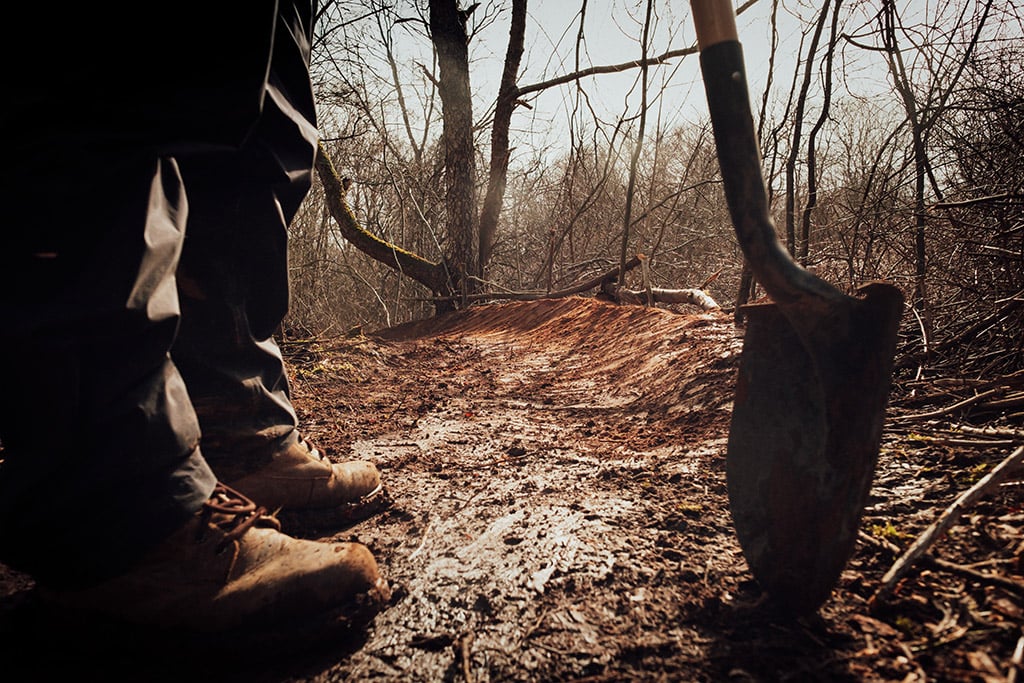
3. Dig A Hole
This is your new last resort. Maybe you forgot a bag. Maybe you only brought one or let a friend use yours. Or maybe, just maybe, you’re out in an (increasingly rare) low-traffic, temperate area that has lots of organic matter and microbes in the soil that’s great for naturally decomposing human waste. This could be an ideal time to dig an old-school cat hole. If that’s your plan, bring a shovel. A simple garden trowel will do for backpacking, but for frontcountry use, a legit folding shovel will make quick work of your task. Kicking into the soil with your heel doesn’t cut it, nor does covering your mess with a rock. Try not to follow social trails that will only make them worse, and if you find that special place and it looks like it’s been used already, find somewhere else. Always go at least 200 ft from a water source, campsite, trail, crag or anything else that’s not undisturbed forest. Dig it at least six inches deep and wide enough to allow whatever goes in to also remain six inches deep. And no, groups should not dig a giant latrine. If you’re in a group that size, packing it out is definitely the right choice. As for the toilet paper, simply take a small zip lock bag with you and pack it out, or use an increasingly popular backcountry bidet, like this one and skip the TP entirely.
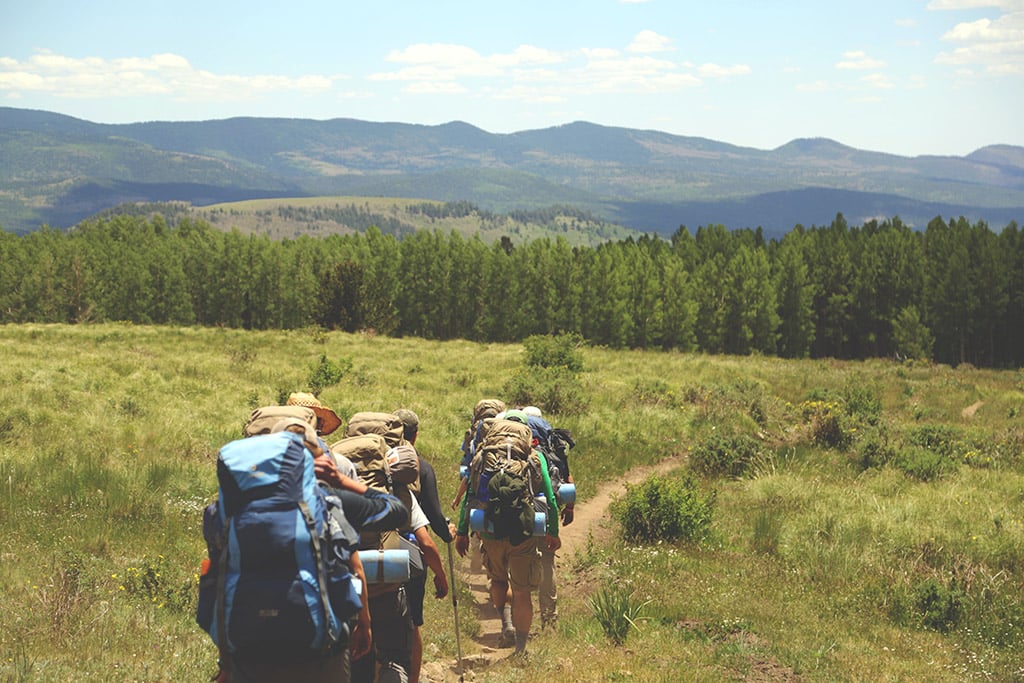
Opportunities for Improvement
It’s not hard to see the impact of millions of plastic bags full of human waste suddenly hitting our landfills, so this is likely not the best long-term solution, but it’s the best we’ve got for now. While I don’t have a better answer, it’s worth putting a call out to the innovators out there. Re-useable outer bags? Biodegradable inner bags? How about group waste storage and transport solutions (outside the car!)? Maybe you have a better solution already? If so, hit us up in the comments and help us all find a better path forward. I’m sure we can all learn a lot on the topic!
The Bottom Line
In a rapidly growing number of places, it’s simply no longer cool to bury your poop. An argument could be made that you should never do it anymore, anywhere. That’s going to take some getting used to for a lot of us, but it’s a reality coming to your favorite frontcountry areas much sooner than you think. I’m sure at some point, cleaning up after your dog was considered disgusting too. But after seeing some real impacts on our neighborhoods, we made a choice to not be so grossed out by it anymore. Let’s do the same for our beloved outdoor spaces—it’s worth it for everyone. Your radical acceptance challenge begins now.
Related Posts:
- 5 Ways to Be a Cleaner Backcountry Camper
- Fostering a Stewardship Culture: Purcell Mountain Bike Traverse
- How to Wash Dishes While Camping in the Backcountry
 Jim Meyers
Jim Meyers
Jim Meyers survives between road trips by pushing all the buttons at Vertizon Photography He is also a recovering copywriter, turned freelance writer. He’s climbed, skied, backpacked, cycled and fly fished extensively throughout North America and is selfishly raising two budding adventurers with his wife and Type-2 fun soulmate in Seattle, WA.
